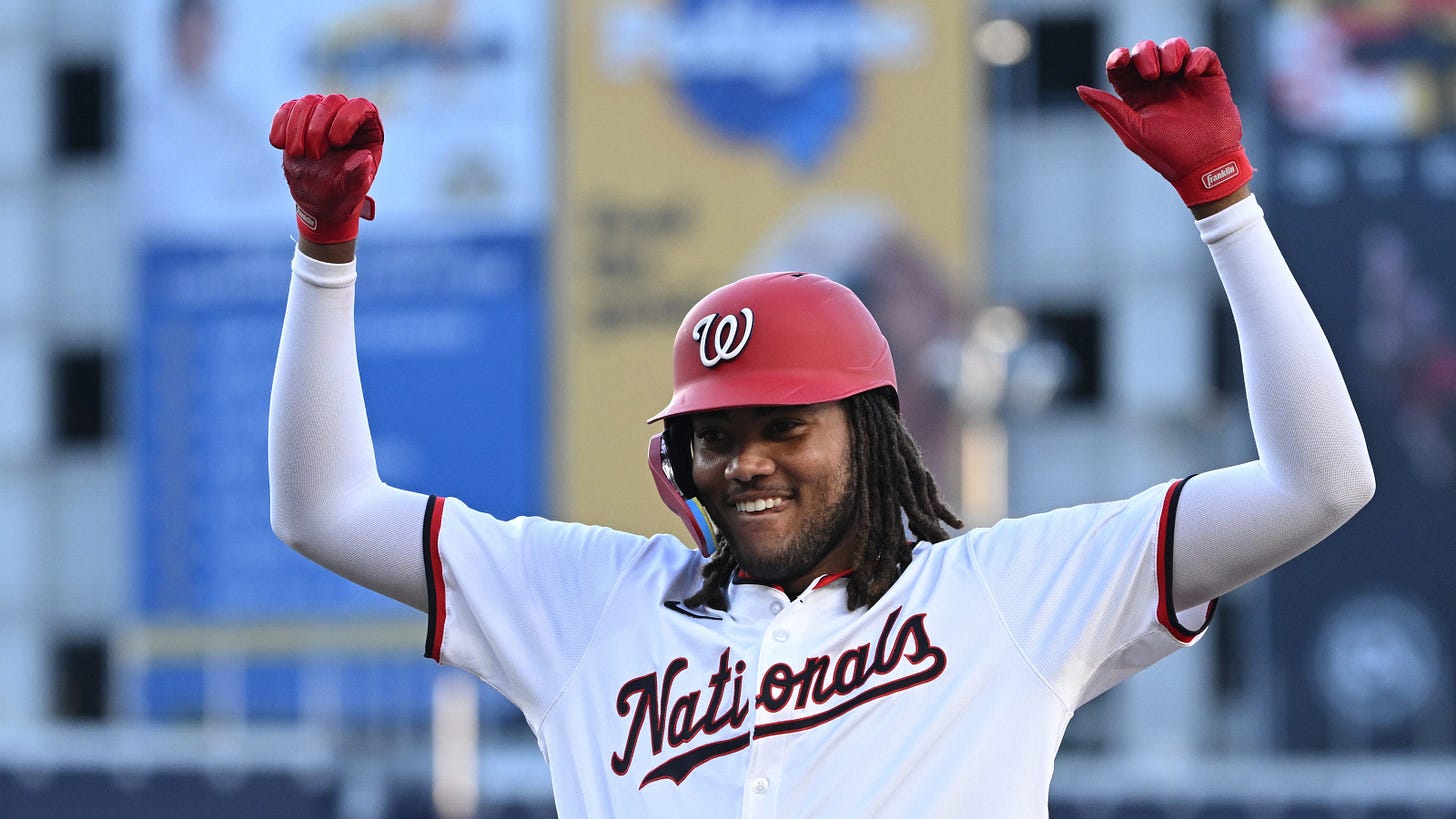What I Learned From Building 2025 Projections… in June
Every battle is won before it's ever fought
I finally finished my 2025 projections. Well, at least for hitters.
That might sound like strange timing. But the more I play fantasy sports, the more I believe this is a year-round process. Gone are the days of cramming for a draft and shelving strategy until the following spring.
As Sun Tzu said, “Every battle is won before it’s ever fought.”
If we’re applying ancient war strategy to 21st-century fantasy sports, the takeaway is that next year’s prep has already begun.
That’s my case for writing about projections in June. Maybe nothing below wins you a title this season, since drafts are over and trading can be tough. But the process itself? That might shift how you view the player pool. And that perspective matters whether it’s a draft pick, a trade offer, or a Sunday night FAAB decision.
In other words, the real edge is less about individual moves and more about how you evaluate players in the first place.
That’s the goal: to develop a durable lens for player value. One that travels across leagues, formats, and calendar years. This mindset shift is what sparked the Backyard Scouting Report, which recently launched. I’ll be profiling at least one team each week.
You’ll also get more on projections: the process, the struggles, and my first real attempt at building a model. It’s something I never thought I’d take on, let alone enjoy this much. It’s not perfect, but it’s helping me see the player pool differently, and it might offer a perspective that’s still missing in most fantasy conversations.
Below are a few early insights from my 2025 projections - lessons I wish I had flagged before Opening Day, and ones I’ll be carrying into next spring.
(Still need to finish the pitchers.)
I’ve gone out of my way to make sure run-scoring environment is reflected in the projections. Runs and RBI aren’t scarce the way homers and steals are, but that doesn’t mean we should ignore them.
Three names that popped on strong offenses: Max Muncy, Paul Goldschmidt, and Will Smith. I’m not positive I would’ve had the conviction to take each of them (let alone hold Muncy through April), but the takeaway is to value supplementary players in premium lineups - a simple yet overlooked fantasy strategy.
From a skills-only view, James Wood was hiding in plain sight, especially in OBP leagues. This is with Washington’s low run environment already baked in. Chourio and Merrill had more MLB reps in 2024, which helped their ADP, but Wood now sits ahead of both in a 2026+ outlook.
Speaking of Merrill, he looks like a long-term batting average standout with low strikeout and walk rates. Consistently putting the ball in play will lead to some cold stretches, which we’ve seen since his return from a hamstring injury. But the barrel rate is up from last year, and the Statcast profile is almost identical. It was tempting to think the June–September 2024 version was the “real” Merrill. Maybe what we’re seeing now is closer to the truth. And if that’s the case, it’s still a strong fantasy profile.
One thing I’ve learned: if a player doesn’t steal bases, then everything else needs to be elite. This includes power, run production, team context, and a proven track record.
Two players I likely avoided thanks to not having this built before draft season: Adolis García and Willy Adames. I’ve never been in on García, so it’s funny to see him surface here. Now 32, he’s a late bloomer whose chase rate is once again trending in the wrong direction. It’s the same red flag that raised concerns back in 2022.
As for Adames, he’s been flat-out bad this year. His barrel rate is down, his sweet-spot% is down, and the result is a career-worst ISO. Regression was widely expected, but he’s still underperformed. That said, he remains a hold in dynasty given the track record.



